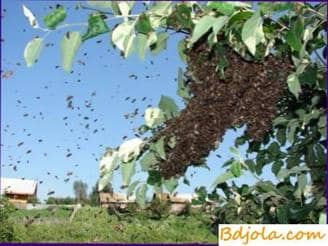
A friend of mine once said:
One day in June, when the day was already slipping towards evening, I began to inspect the family and found mature queen cells. It is clear that the swarm is about to come out, and as luck would have it, I was in a hurry: it was necessary to leave urgently. Back to return could only a week. But I did not want to leave my family in a swarm. In short, it was necessary to take some emergency measures. I see that a lot of sawdust is lying near the hives. He took a bucket of sawdust, took off the canvas from the store and poured them on top directly onto the frames. Covered the nest with a canvas, put a roof on the hive and left. Before leaving, he looked around: I see that the bees from the hive began to fly out actively, not lightly, but with the load – with sawdust: they brought the nest in order. A week later I come to the point, immediately to this hive, and what would you think? The family from the swarm state left, the honey shop brought.
Поение пчел. Чем заменить пергу.
Beer lover's section